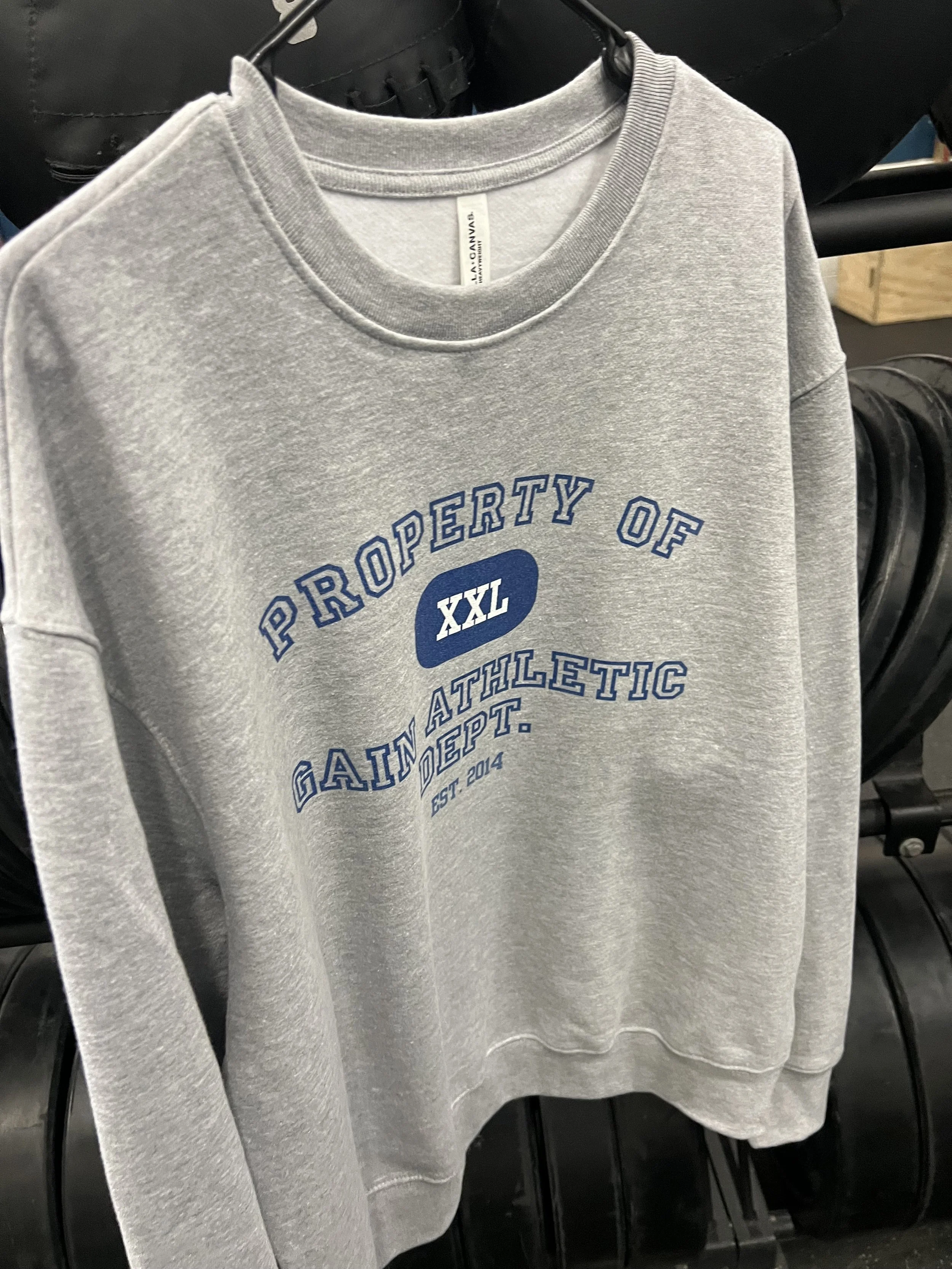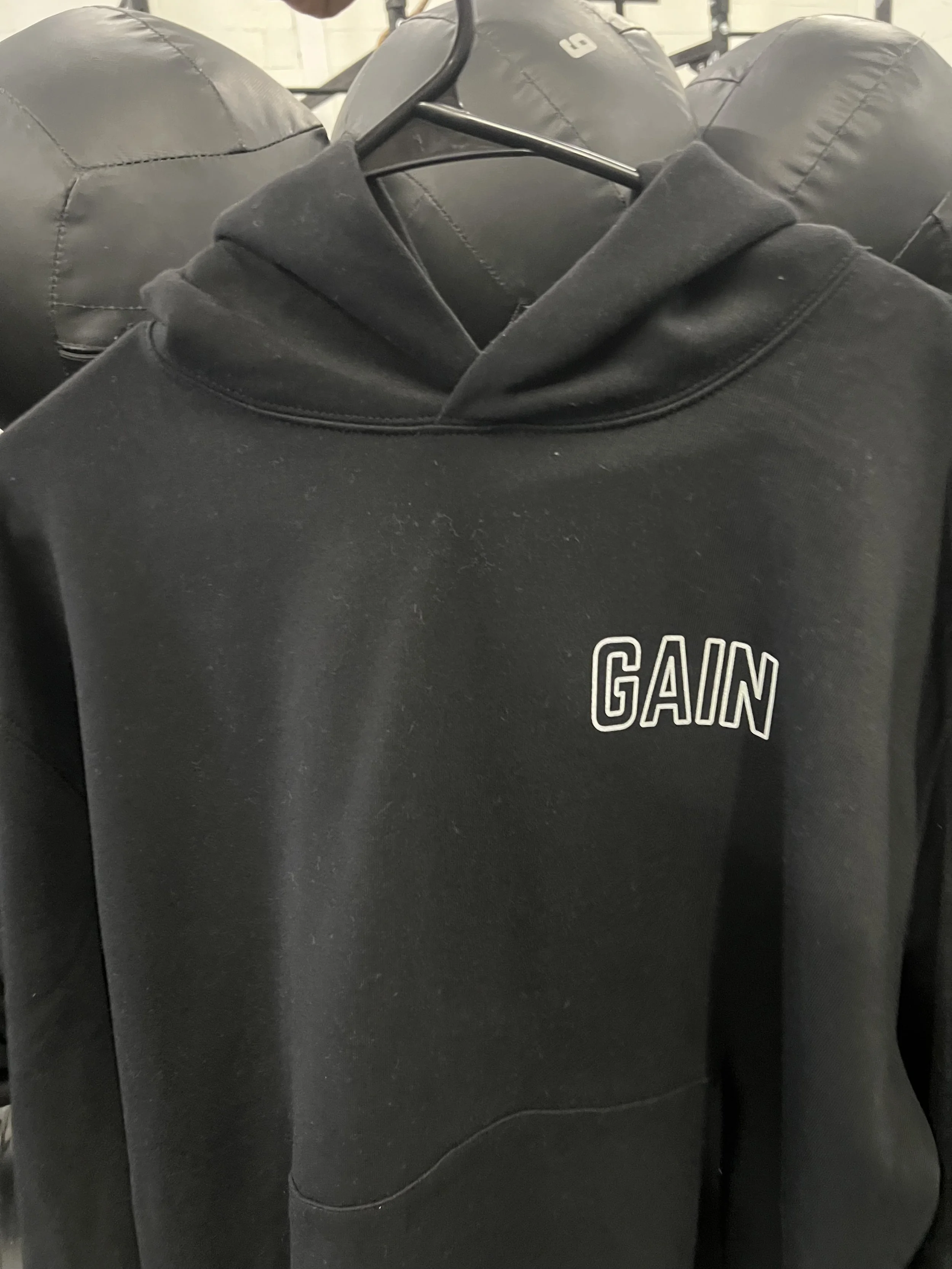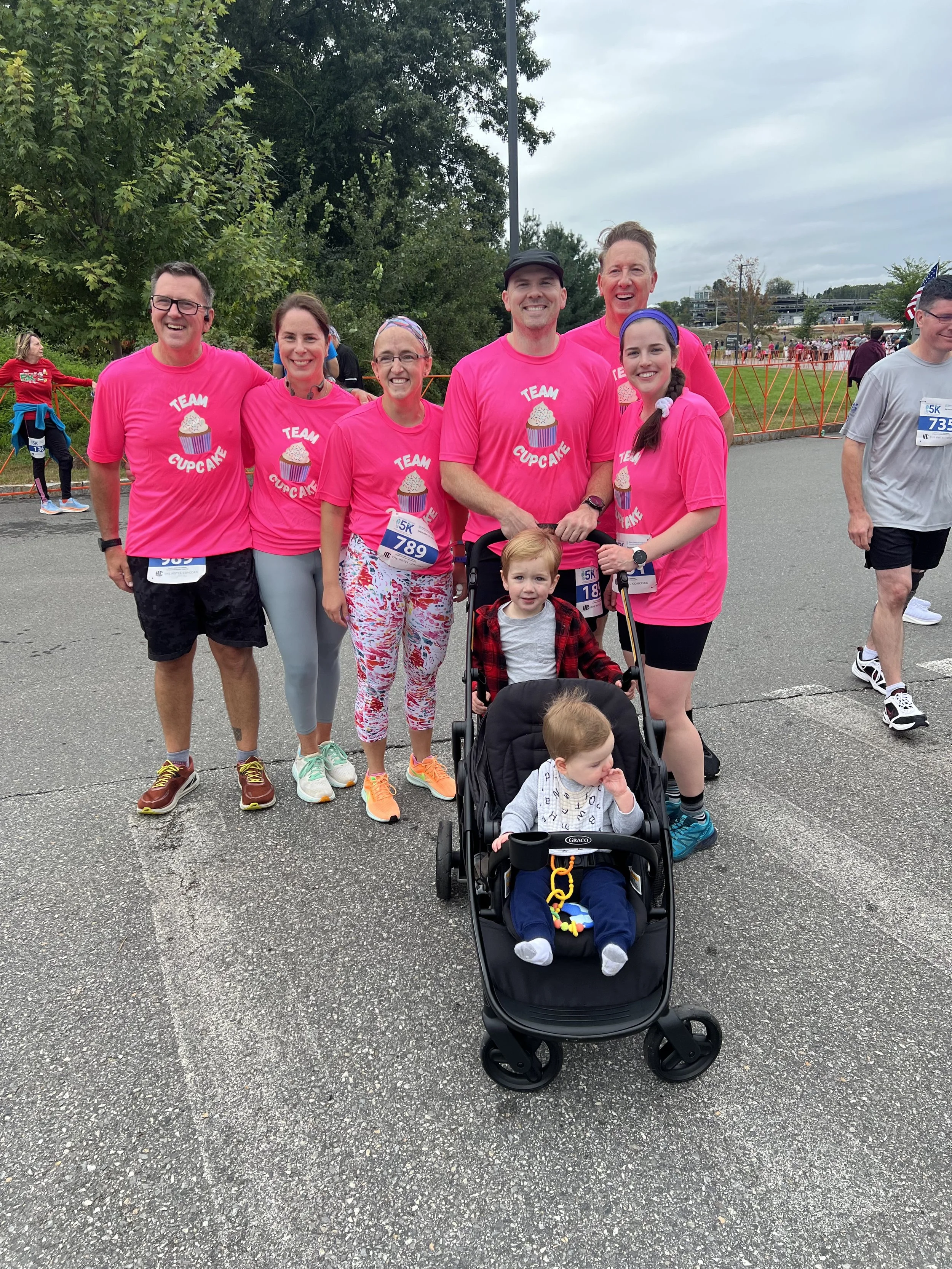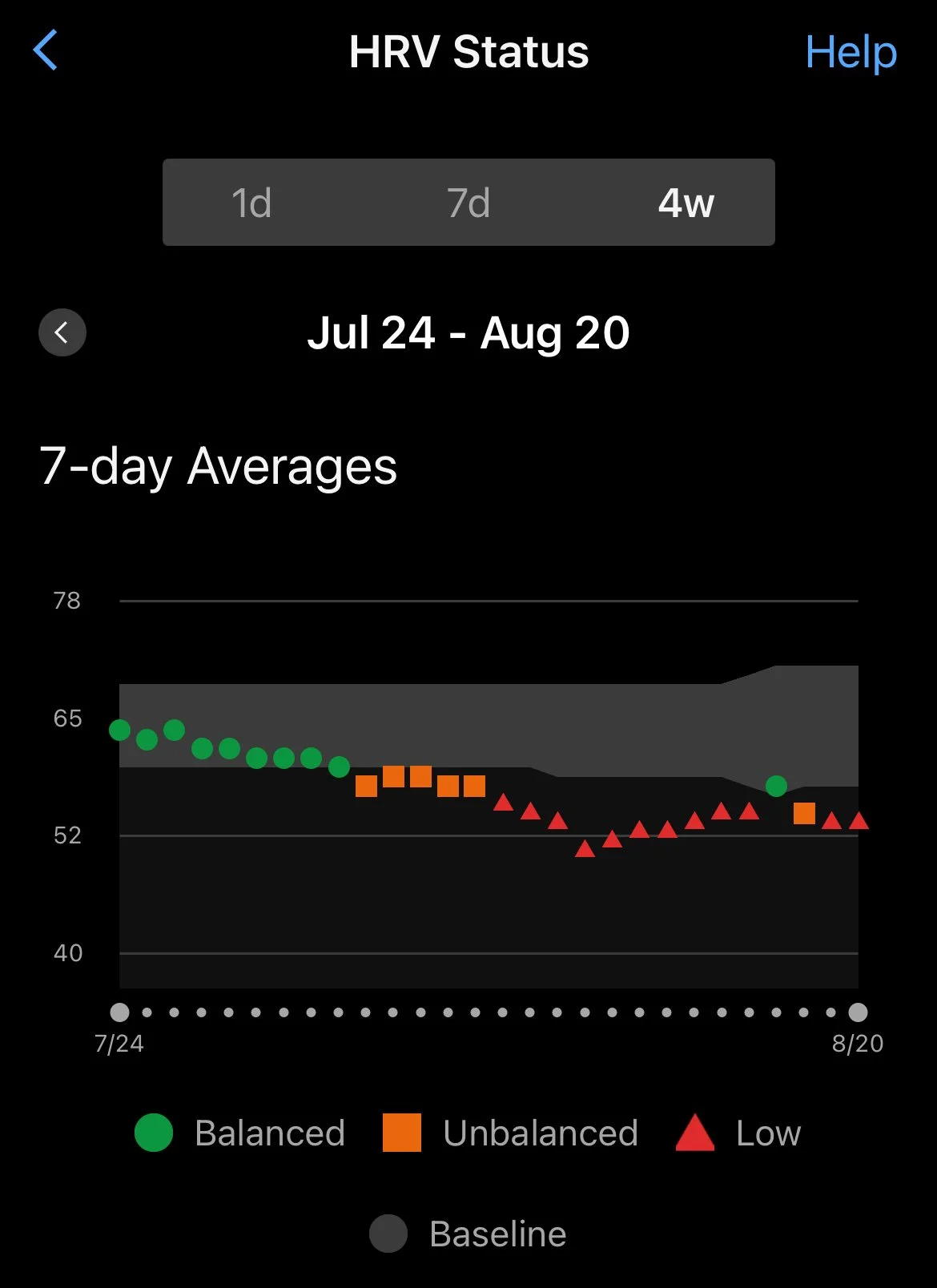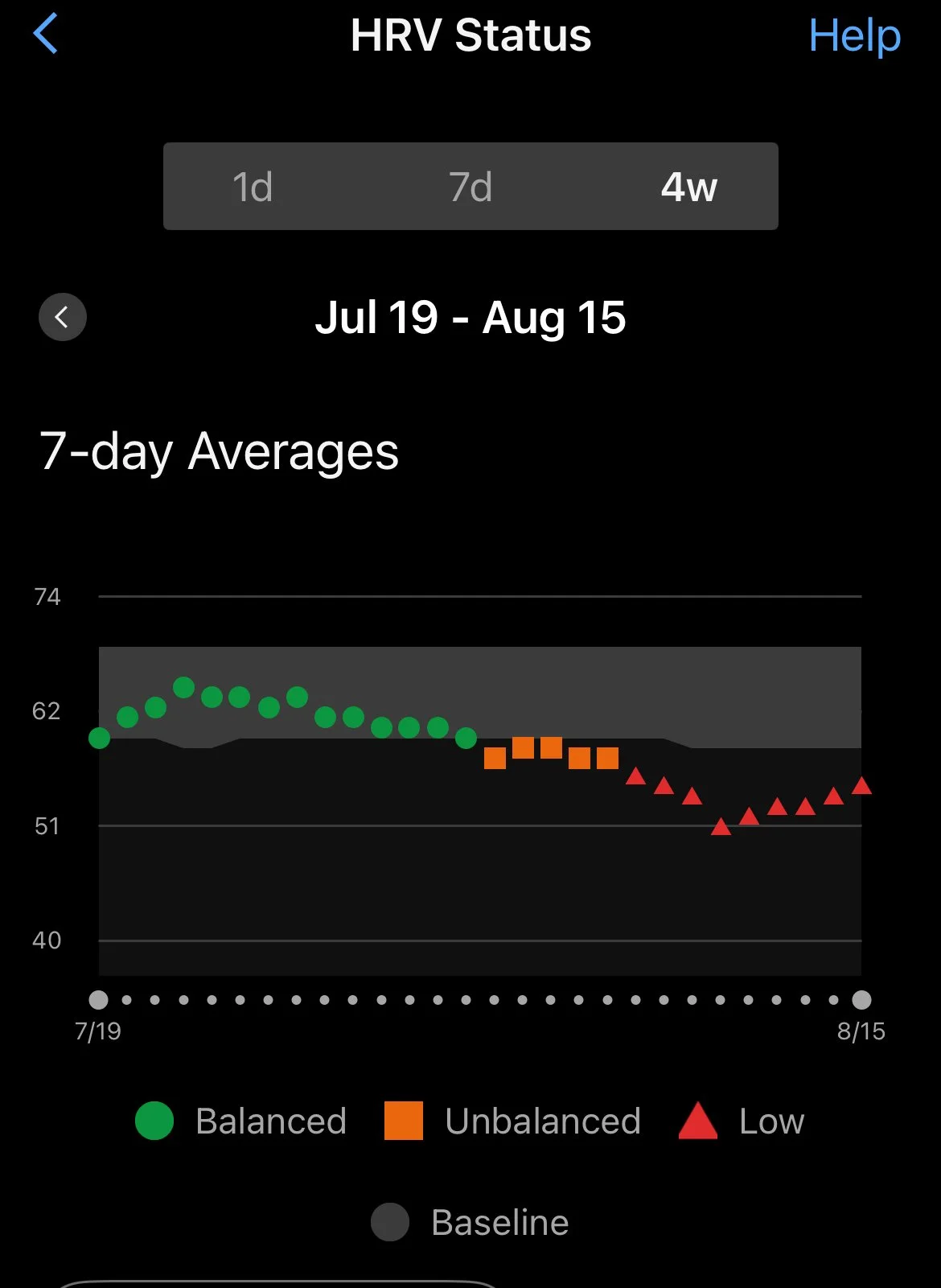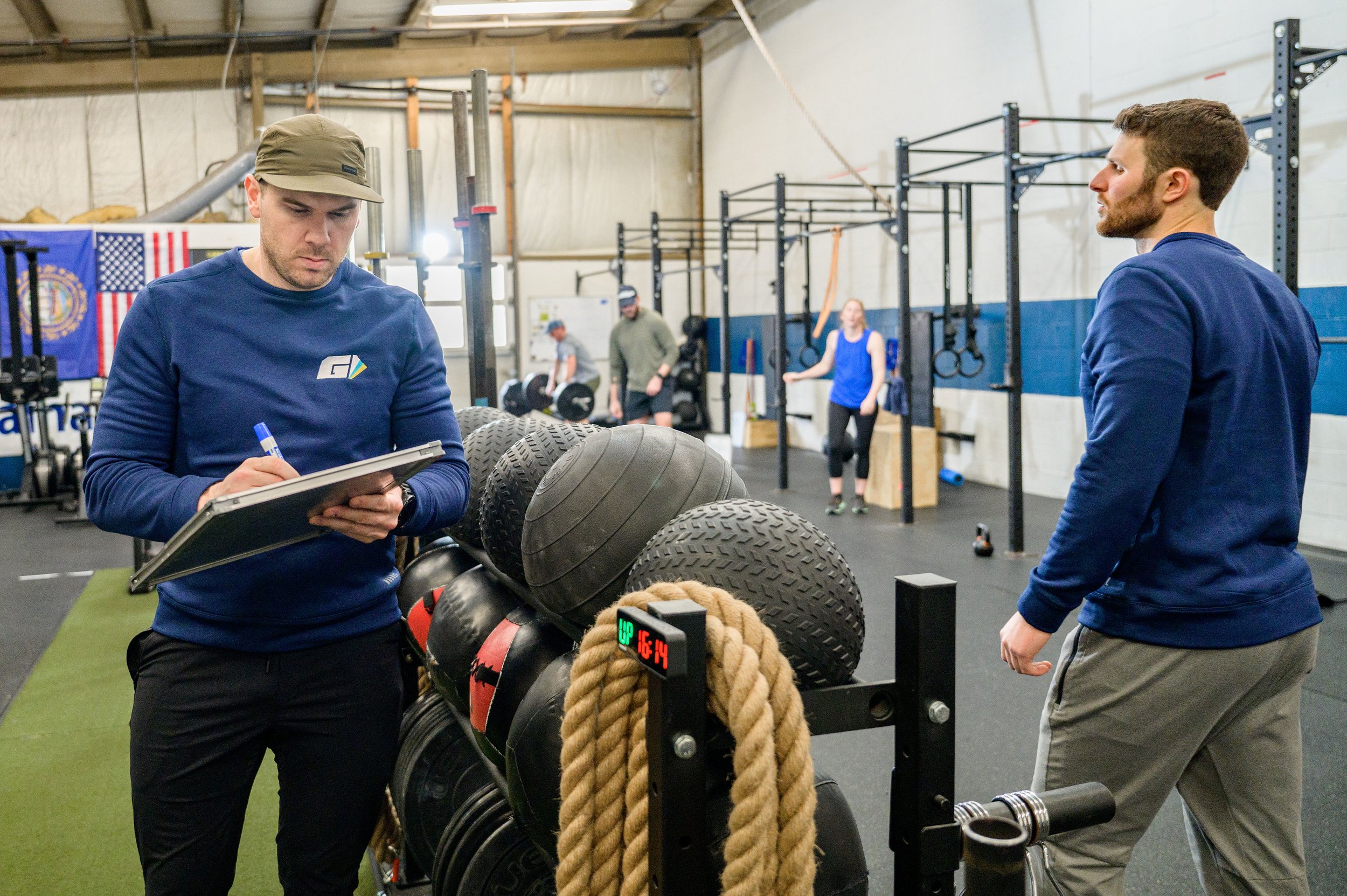
Welcome to the GAIN Blog
The blog is updated Monday-Friday. Tune in for posts and discussion about health, fitness, nutrition, training experiments and reflection. We share articles, videos and more. We post the link to our Instagram story every day, make sure to follow along there to never miss a post.
Friday Thoughts 96
Welcome to this week’s edition of Friday Thoughts, where I share what’s been on my mind and my feed this week. Enjoy!
Seacoast Cancer 5k Run/Walk
This Sunday, 9am at Pease is the Seacoast Cancer 5k. If you’ve joined Team Cupcake and will be out there on Sunday let me know!
Sign up here if interested in joining
RIP MARGARET
Margaret was one of my very first clients. She was also Clem’s biggest fan. She came to the gym because she wanted to stay independent and strong later in life, but she gave me just as much as she got. Always the teacher, she loved slipping history lessons into our training sessions. And we debated constantly, which she chalked up to the fact that we were both stubborn only children who always wanted to be right.
She hadn’t been able to come to the gym for several months due to health complications, and on September 2, she passed away.
Thanks for being you Margaret, we’ll miss you!
Birthday Boy
Elliot turns 5 on Sunday! Seriously, these last 5 years have gone by so fast I can barely believe it.
46ers
Talk about long game! That’s a lot of miles and vert over the years!
Me for the past 9 months
Big Breath Drill
Breathing is important. The challenge is getting people to actually do it. It feels boring, uncomfortable, and like a waste of time when your brain is running a million miles an hour. That’s why the simplest drills work best. Here’s one you can try this week.
Why Breathe?
Better mechanics: A few minutes of focused breathing can unlock better movement and positions. Think of it as a mobility drill for your whole body.
Change your state: Breathing can either wind you up or calm you down. This one is designed to wake you up.
Improve posture: When you know what a full, deep breath feels like, you’ll notice how poor positions cut it short.
I don’t need to cue you with “use your diaphragm” or “expand your ribs.” Just focus on filling up as much as possible. With practice, your body will figure it out. At first it might feel like all chest and shoulders, but the more reps you get, the more expansion you’ll feel through your whole trunk.
The Big BReath Drill
Lay down on your back with your feet on the wall.
For 90–120 seconds, take big, deep, expanding breaths with sharp, quick exhales.
On your last exhale, blow it all out and hold.
Rest, then repeat when ready.
Do 2–3 rounds.
The longer you hold after the exhale, the better your next breath will be.
Give it a shot this week—and pay attention to how much better you feel afterwards.
—Justin Miner
GAIN Athletic Dept.
At GAIN, we’ve been jumping, throwing, moving fast, and being explosive more than ever.
Each year I take a hard look at our programming and ask, what’s missing? This summer, the answer was clear: we needed to bring athleticism back.
So we added:
More throws
More jumps
More power
That’s how the GAIN Athletic Department was born—a nod to reclaiming our athletic roots, whether you’re 30 or 70.
Here’s to use it or lose it—move fast, be quick and stay athletic.
Pre-order is open now for the GAIN Athletic Dept. sweatshirt (two hoodie options available too). Orders close Friday.
Get yours and rep the Athletic Dept.
—Justin Miner
Toe Spring, Balance and Foot Strength
Put your shoe on a flat surface and look at it from the side.
Does the toe sweep upward so the tip no longer touches the ground?
That curve is called toe spring, and if you see it, that shoe isn’t a good choice for the gym.
The moment you put it on, toe spring shifts your balance. Over time, wearing shoes like this can lead to stiffer, weaker muscles and fascia in your feet and lower legs.
Now think about standing barefoot. Do your toes naturally slope off the floor like that? Of course not.
Toe spring is marketed as a feature that makes walking and running easier. Maybe it does—but easier isn’t always better. The Harvard Gazette summed it up well: the upward curve may ease motion, but it can also lead to weaker muscles and more problems down the road.
And toe spring is just one issue. These shoes usually come with thick, cushioned soles and a raised heel. That combination dulls your foot’s natural sensitivity, shifts your center of mass, and makes it harder for your body to receive feedback from the ground. Translation: you’re more likely to lose your balance.
Balance is something we all need to protect as we age. Training it directly is important, but so is choosing the right gear. A better gym shoe is one with:
A stiffer, flatter bottom
Minimal heel drop
Enough space for your toes to spread out
It’s a small change that pays off big in the long run.
—Justin Miner
Monday check in
Happy Monday!
Darker mornings and cooler weather is here. Fall is right around the corner.
Changing of the seasons is a great time to build a new habit, a chance to hit the reset button.
If you’ve been thinking you need to get stronger, now is time.
Get involved with a 3-session trial and see if we’re the right fit for your fitness needs.
—Justin Miner
Friday Thoughts 95
Welcome to this week’s edition of Friday Thoughts, where I share what’s been on my mind and my feed this week. Enjoy!
Seacoast Cancer 5k
Join a crew of GAINERS who are walking or running the Seacoast Cancer 5k in memory of Kendra Chevalier, a GAIN member who passed away earlier this year. If you sign up — be sure to join Team Cupcake, and put your name on the whiteboard in the gym so we know who will be there on the morning of the 14th.
FALL SWEATSHIRT PREORDER
We have 3 new sweatshirts available to keep you warm in style this fall.
Classic logo gray hoody
Finally making my black hoody I always wear available after years of promise
Property of GAIN ATHLETIC DEPT.
Put on your name on the preorder list at the gym. Hoody’s are $50 and the Athletic Dept. crewneck is $45.
Technical Problems and Adaptive Challenges — is protein and creatine becoming mainstream good? Are we still missing the point?
There are two categories of problems you’ll face in life.
The first is a technical problem. These have a known solution. You just need the right steps, manual, or expert. Flying a plane is technical. Fixing a broken AirBike is technical — Google the part, follow the instructions, done.
Adaptive challenges are different. They don’t get solved with a manual. They demand change — in mindset, values, or habits. An athlete with performance anxiety won’t fix it with another book or podcast. The work is internal.
Running a business is the same. The internet is full of “10 tips to get more clients.” If advice alone worked, everyone would be crushing it. The real challenge isn’t more hacks — it’s shifting behavior, beliefs, and identity.
Here’s the trap: we’re famous for treating adaptive challenges like technical problems. We think if we just had more info, more data, more hacks, we’d finally change. But technical fixes don’t work on adaptive problems.
Take fitness. Protein and creatine are everywhere now — in ads, articles, grocery stores. At first, I thought: finally, people are getting the info! But underneath, the adaptive challenge remains: how do we actually stay healthy and fit as a nation?
Protein is great. Creatine is great. More info is fine. But solving an adaptive problem takes more than tips. It takes deep change.
Get to work!
If you want to learn more about these types of problems and how to best overcome them: Immunity to Change by Robert Kegan.
I save this to show the kids
And maybe you’ll like it too.
Jack3D
I was one of the lucky ones to ride the wave of the original Jack3D. Me and my friends would take a couple scoops before working out at 7pm. Oh to be young.
Thanks for reading, see you next time!
—Justin Miner
Bored? Good.
In order to get better at anything, you need to practice.
And the better your practice is, the more likely you are to improve. Athletes of every sport, at every level, drill the fundamentals. The best in the world still work on the basics.
But in fitness, we’re obsessed with novelty. We want something new and shiny so we don’t get bored.
What if boredom isn’t the enemy? What if it’s part of the process?
If you’re always chasing the next new thing, you never give yourself the time to adapt. Real progress comes from doing the same thing over and over—strength work, mobility drills, conditioning sets. It’s repetition that builds results.
So reframe boredom. If your routine feels stale, it means you’ve been consistent. You’re putting in the reps. You’re right on track.
Bored? Good. That’s the sound of progress.
—Justin Miner
When Training is Untraining
When first starting your strength training journey it can be less about piling on new muscles and more about ditching old habits.
If you’ve moved a certain way for years, unlearning those patterns, or just becoming aware of them, is the first step to actually building strength.
Think about this: 25–50 squats in a workout is a normal chunk, especially for a beginner. Do 30 squats once a week for six months, and you’ve racked up 750 reps. Sounds like a lot… but in the grand scheme, it’s just the beginning.
Mastery takes practice, and practice takes time, and thousands of reps. The more reps you get, the more you wash away old habits and replace them with better ones.
—Justin Miner
Seacoast Cancer 5k: Team Cupcake in memory of kendra CHEVALIER
It’s September, and that means another round of the Seacoast Cancer 5k.
We first got involved in this event two years ago when GAIN member Kendra began her cancer treatment. This past April, Kendra passed away. This year’s race is an opportunity to honor her memory while supporting the many others who are going through a similar fight.
Whether you run, walk, or just sign up to donate, your involvement makes a difference. My whole family and I will be out there again, just like we were in 2023, and I’d love for you to join us.
What: Seacoast Cancer 5k
When: Sunday, September 14th at 9:00am
Where: Wentworth Douglass Outpatient Center, Pease Tradeport
When you register, be sure to join one of the two teams already set up for her:
TEAM CUPCAKE
TEAM CUPCAKE: In Memory of Kendra Chevalier
It doesn’t matter which one you pick—they’re both for Kendra.
USE THIS LINK TO GET INVOLVED!
—Justin Miner
We’ll be rocking this stroller again, though I think it’s going to be a little harder to push this year.
Friday Thoughts 94
Greetings! Welcome to this week’s edition of Friday Thoughts, where I share what’s been on my mind and on my feed. Enjoy!
Enjoy the Long Weekend
Get out and do something this weekend! Hike, walk, bike, or if you’re like me, do some yard work you’ve been neglecting.
Push Ups
Last week’s Friday Thoughts 93 created a great discussion around form, technique, proper movement, and the idea of quality vs quantity in the gym. We should always strive for excellence in our movement. As defined by fitness thinker Greg Glassman, virtuosity is doing the common uncommonly well.
It doesn’t mean all your reps will be perfect. A common issue young coaches struggle with is overcorrecting movements, and not allowing people to have a little wiggle room to try and sort it on their own.
It might take someone two years to nail a perfect push up. In the meantime though, we can use proper progressions and regressions to work the movement in an a challenging yet appropriate way.
It doesn’t mean all your reps will be perfect. A common issue all young coaches struggle with is overcorrecting movements, and not allowing people to have a little wiggle room to try and sort it on their own.
It might take someone two years to nail a perfect push up. In the meantime though, we can use proper progressions and regressions to work the movement in an a challenging but appropriate way.
Perfect vs Consistent
A big reason why every rep or every workout doesn’t have to be perfect, and we don’t expect it to. Consistency wins every time.
Reading
Three things helped me turn into a reader.
I traded non-fiction for fiction.
I quit books I don’t like.
Heard someone in an interview when asked how the read so many books. “I read for 5-90 minutes in the morning and night most day.”
Still Got It / Never Lost it
Speedy!
Thanks for reading, I’m out today—see you on Tuesday!
—Justin
labor Day HOurs
Quick heads up: we’re closed on Monday, September 1 for Labor Day. Also, no PM class tomorrow (Friday 8/29). Morning and midday sessions Friday are normal.
Enjoy the long weekend. See you soon!
—Justin
Slowly and Consistently
I heard something the other day that stuck with me:
The best way to get in shape is the same way you got out of shape — slowly and consistently.
Think about it. It’s not one meal, or even ten, that leads to weight gain. It’s the habit of overeating, stretched out over months and years, that sneaks up on you. The change feels sudden, but really it’s been happening slowly all along.
The same with moving less and less. Before you know it, two decades have past.
There’s no shortcut.
The way forward is the same as the way back: steady, patient, consistent effort.
—Justin Miner
Truth-0-Meter and Longevity
In college I participated in a peer’s research study that needed 20 strong, college-aged people.
How did they determine “strong”? With a hand dynamometer—a device that measures grip strength by the pounds of force you can generate with your best squeeze.
It was simple, low-skill, and surprisingly accurate. That was the first time I learned grip strength can be used as a predictor of total body strength.
A couple years ago, several GAIN members sent me an article, What Grip Strength Can Tell You About How Well You’re Aging.
“A wealth of research already tells us that strength is good for us. People who lift weights are substantially less likely to develop heart disease, high blood pressure and many other chronic illnesses than those who skip resistance exercise.”
Grip strength doesn’t just measure your squeeze, it’s a window into your overall strength. And strength itself is one of the best predictors we have for longevity.
Next time you’re in the gym, give it a squeeze. See what the Truth-o-Meter says.
—Justin Miner
Monday Check in
Labor Day is around the corner, that means it’s back to school time.
For a part of our lives, back to school time is a signal for change to come. New schedules, routines, things to learn and places to be. Elliot starts kindergarten in just a few days, so we’re feeling all that newness. It can be overwhelming, or a chance to get into new habits and routines.
Whether the school year starting is directly affecting you or not, the cooler times and changing season is reason enough to get started on a new habit—get back to the gym, start walking more regularly, or finally start stretching at night like you said you we’re going to.
There’s never been a better time to start.
SCHEDULE NOTE:
CLOSED MONDAY 9/1 for Labor Day (NO Friday PM Class 8/29)
—Justin Miner
Friday Thoughts 93
Greetings! Welcome to this week’s edition of Friday Thoughts—where I share what’s been on my mind (or my feed) throughout the week. Let’s dive in.
PUSH UPS
Push ups are an all-time great. If there were a Mount Rushmore of exercises, they’d be carved right in. They require nothing but the ground and are a pure test of strength and muscular endurance.
Here’s my issue though: the standard. We all know what a push up is—but what actually counts as a good one? In the gym—especially at our gym—this isn’t the most important thing. Our goal is to move better, get stronger, and feel good. But the standard does matter when you’re making a claim.
If someone says they can do 50 push ups, what does that mean? Chest to the ground, arms locked out? Or just a slight elbow bend before pressing back up? Those are two very different things.
For me, the rule is simple: use as much range of motion as safely possible. Unless you’re chasing some official record, that’s what matters. But if you are claiming a record—like most push ups in a certain time—then the standard absolutely matters. Otherwise, what are we even comparing?
This came to mind after seeing RFK and Pete Hegseth do a push up challenge to promote fitness. I love the idea—push ups and pull ups on national TV? Great! More people moving? Even better. But if you’re going to make a claim about how many you did, form has to be part of the conversation.
Same with the world record set last year for most push ups in an hour. Watch the video—would those reps pass your standard? For me, not really. At GAIN, I’d say, “You’re strong, now let’s work on range of motion and control—chest to the ground!”
Everything I needed to know about RFK’s Jr.’s push ups I learned during his presidential run a few years back.
Push ups are cool. Quality push ups are even cooler. But if we’re going to do them, let’s do them right. Because at the end of the day, we all know what a push up is, and this isn’t it.
Recently, the Army has established a new push up standard for the Army Combat Fitness Test, and I’ve got to say, I like it because it forces a proper depth for every rep. Check it out.
To reiterate once more, we all don’t have to do Army Combat Fitness Test Push Ups every time we’re in the gym. We should strive to use the bets form possible, and the most range of motion that we safely can. When making a claim though, there needs to be an agreed upon standard for this basic movement.
Most of all, we should value movement quality over quantity. If we’re going to become healthier as a nation, we must understand that.
Thanks for reading, see you next time!
—Justin Miner
EAse BAck IN
If you’ve had an extended break from training, the kindest thing you can do for yourself is ease back in.
Trying to “make up for lost time” by doing more right away isn’t productive. It’s just hard for the sake of being hard—not smart training.
If you’ve been away this summer, or haven’t made it in as often as you’d like, remember: easing back in is the smartest path forward.
There’s no short-term benefit in crushing yourself on your first day back. Instead, think long term—how can this workout become a stepping stone to more?
The good news: you hold on to more strength and fitness than you think. After a couple of sessions to shake off the rust, you’ll feel back to normal in no time.
Remember to play the long game!
—Justin Miner
WheN HRV TANKS
My HRV is still low. The week of MMD it started dipping into “unbalanced,” then hit “low,” and it’s been clawing its way back for the last ten days.
Heart Rate Variability (HRV) measures the time between each heartbeat. More variability is a sign your body is well-recovered. Less variability usually means you’re overdoing it.
Here’s my HRV chart from the past four weeks. That lowest dip in red? Morning of the MMD 50k.
It’s been 20 days since the first orange square on that chart. The only other time I dipped this far, it took me 19 days to climb back into the green. The difference this time is how I handled it.
April vs. August
Back in April, when my HRV dropped, I was just starting to ramp up my summer training. I felt good, but I listened to the tech and took a couple extra rest days. It was frustrating, but it worked. I bounced back and stayed steady all summer.
In August, though, the dip started during race week. And honestly? I ignored it. My training load was already reduced, and I was doing the run no matter what. That’s the reality—training is stress, and big events magnify it. Sometimes your numbers will take a hit no matter what.
Now
Race morning HRV was the lowest it’s ever been. It’s creeping upward now—though dipping again a bit—but I’m still ignoring it. Based on past experience, I expect a few more days before things normalize.
Meanwhile, I feel great. Running feels strong (I deadlifted 405 the other day), sleep scores are trending up (lots of 80s and 90s lately), and I’ve been cutting caffeine and getting to bed earlier.
The metric I am listening to is desire:
Do I want to run today?
Do I want to lift, move, and rack up some steps?
Or do I need a nap instead?
If the itch to train is there, I’ll take it. If not, I’ll rest. If I had a big event coming up in 6–8 weeks, I might back off more strategically. But right now? I’m training for fun.
So while my HRV is low, I’m not giving it much attention—other than looking forward to that little win when it climbs back into the green.
—Justin Miner
Step up tips
Step ups don’t get much love in the strength training world. They’re simple, not flashy, and usually overshadowed by the more exciting things people do on boxes—like jumping on them.
That’s too bad, because step ups are one of the best teachers in the gym. They show us how we move, how to create tension, and even highlight where our movement faults come from.
Once your foot is planted on the box, don’t let it cave inward toward your big toe. A good cue: knee toward your pinky toe. It feels like you’re overcorrecting, but even if your knee drifts slightly inward, you’ll still be in a safe, strong position.
Another thing to watch: your knee driving too far forward and pulling your heel off the box. Think of your foot as a tripod—big toe, pinky toe, and heel. Keep all three points firmly planted.
Finally, allow a slight lean forward at the start of the rep. Getting your shoulders over your thigh helps you stay organized and balanced.
These simple cues make step ups effective whether you’re using them for conditioning, adding weight for strength, or just moving through everyday life when you find yourself—literally—stepping up to something.
—Justin MIner
Monday Check In
Another new week! Can you feel it in the air? The seasons are changing, and I don’t mean the cooler weather we’re expecting today.
Summer is winding down and good habits and new routines are on peoples’ mind. I’ve always said, September is just as busy as January for gyms. It’s a a chance to start something or build a new habit.
If you want to start hitting the gym this fall, keep these things in mind.
The first few workouts should be easy. You need to build momentum, not push it too hard (people who push hard in the beginning always quit for the next shiny thing)
Less is more. The 60 minute workout window is arbitrary. Don’t let time dictate how much your body should handle. Expect your first workout to be 30-40 minutes—and that’s okay.
Identity and mindset. My favorite takeaway from James Clear’s Atomic Habits: if you want to accomplish something, you need to see yourself as that thing. It’s not “I’m going to start working out,” it’s “I workout now.”
See you in the gym!
—Justin Miner
Friday Thoughts 92
Welcome to this week’s edition of Friday Thoughts, where I share things I’ve seen or been thinking about lately. Enjoy!
Seltzer vs. Sparkling
There’s been a debate and at gym and consider this my official statement: there is no difference between seltzer and sparkling water. They’re simply two terms for the same thing—carbonated water. Case closed.
Untapped
Just some more love for these little packets. Sure, I could make my own or fill a soft flask with maple syrup for a long day out, but the individual serving packs are just too convenient. Perfect for training days or long races when I want something quick and easy.
What’s Next
I’m feeling really fit after finishing MMD last weekend. The big question I’m pondering—what’s next? I have a few ideas, like a couple different mountain routes, floating in my head. The only thing officially locked in right now is the Great Bay 5K in late October.
HRV
Heart rate variability (HRV) is a measure of your body’s recovery status. It’s the natural variation in time between heartbeats, measured in milliseconds. Generally speaking, higher HRV means you’re more recovered; lower HRV means your body is under stress.
Back in April, I had a 10-day stretch where mine tanked. This time it dropped a couple days before MMD. I’ve been training this week, but keeping things moderate—getting to bed early and cutting off caffeine sooner.
When HRV dips, I think it takes many days to climb back up, no matter what you do.
Climbing out of the hole!
That’s all for this week. Thanks for reading—see you next time.
—Justin Miner

